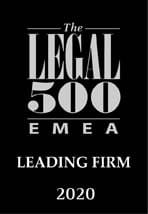The publication of the Hungarian National Bank („MNB”) entitled „Commercial Real Estate Market Report” analyzes the processes of the affected market on a semi-annual basis. This publication presents macroeconomic factors affecting the commercial real estate market, and demand and supply-side trend sin different segments both in the rental and investment markets for commercial real estate. The commercial real estate market is of crucial importance, as it influences all sectors of the economy while also playing a major role in people’s everyday life, thus we refer below to the most important findings of the MNB report.
Executive Summary of the MNB Report
“In the second quarter of 2021, Hungary’s GDP grew by 17.9 per cent in year-on-year terms, and thus economic performance already exceeded the pre-pandemic level. The performance of sectors relevant to the commercial real estate market improved, while the positive impact of growth on the real estate market fell short of that observed in previous cycles, partly due to the direct impact of the pandemic (lasting drop in tourism) and partly to uncertainties resulting from the trends accelerated by the pandemic (penetration of home office and e-commerce). Looking ahead, besides the positive impact of further economic expansion, the fourth wave of the pandemic could pose a risk to factors affecting the commercial real estate market.
In the first half of 2021, the vacancy rates in the Budapest office market and the industrial-logistics market increased by 0.7 and 2 percentage points to 9.8 and 4 per cent, respectively. While the rising rate in the office market is mainly driven by falling demand, in the industrial-logistics segment it is mostly caused by the growing supply.
In the retail segment, the vacancy rate stagnated in parallel with a pickup in consumption and footfall. In the office and industrial-logistics markets, an increase in vacancy rates can be expected over the next one or two years, due to the high volume of new completions. However, these rates do not yet represent excessive market risk, particularly in the latter segment. No decline was observed in average rental rates in any of the segments, but looking ahead there may be a correction in rental rates for industriallogistics properties.
On the other hand, the expansion of supply also improves Hungary’s international competitiveness in logistics, which may become a stabilising factor for rental fees by fostering new demand. Domestic hotel turnover improved as the waves of the pandemic subsided, but even in July of this year the sector was still unable to reach the average monthly turnover level from 2019. The buoyant hotel development activity that commenced in recent years will boost supply by almost 3,000 new rooms over the next one and a half years, while certain analyses foresee international tourism returning to the pre-pandemic level by 2024.
In the first half of 2021, the investment turnover of domestic commercial properties rose by 15 per cent in annual terms, reaching EUR 0.6 billion. A major part (58 per cent) of this was generated by a few high-value transactions and 78 per cent of it related to domestic investors.
There is still available liquidity and investor interest in the market, but buyers are cautious due to the lack of market price benchmarks and the prospects for individual segments. However, in parallel with the more moderate investment demand, the supply of properties for sale also declined, resulting in lower yields. Looking ahead, the monetary tightening cycle that has started in several countries may also reduce the yield premium offered by property investments.
As in Hungary, the investment market of the other region was also characterised by moderate activity and a recurring fall in office market yields. In the first half of 2021, the investment activity of domestic public real estate funds was low; nevertheless, their liquidity position is stable, and at sector level the ratio of liquid assets to net asset value can be deemed safe.
At the end of June 2021, credit institutions’ project loan portfolio secured by commercial real estate had grown by 18 per cent in year-on-year terms. In the first half of 2021, credit institutions disbursed 22 per cent more project loans secured by commercial real estate than a year ago, while the share of forint loans within the project loan portfolio rose to an unprecedented level of 21 per cent, due to the FGS GO! („Funding for Growth Scheme”) programme. Banks did not change conditions on commercial real estate loans significantly in the first half-year, while they perceived increased credit demand. According to the responses in the Lending Survey, institutions anticipate the easing of lending conditions in the second half of 2021, but caution remains a key factor, due to the industry-specific risks.
At the end of June 2021, 46 per cent of the credit institutions’ project loan portfolio secured by commercial property which was eligible for the moratorium – including 80 per cent of hotel financing loans – was participating in the scheme, which exceeds the ratio for the total corporate loan portfolio. The project loan portfolio under moratorium, connected to the riskier hotel and retail segment, amounts to HUF 270 billion, however the ratio of contracts eligible for further moratorium is higher among them. The capital adequacy of the banking sector is adequate to deal with potential risks arising from the commercial real estate market” – states the Commercial Real Estate Market Report published by the Hungarian National Bank (“MNB”) in October 2021.
Authors: Attila Marjai and Bence Kampits




